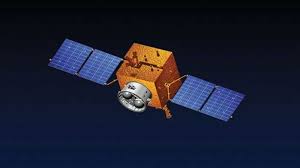In a remarkable leap forward, Pakistan has successfully completed another satellite launch, marking a new chapter in its space ambitions. The Pakistan satellite launch took place at China’s Xichang Satellite Launch Centre (XSLC), in collaboration with the China Electronics Technology Group Corporation (CETC) and MICROSAT China.
This newly launched remote sensing satellite is designed to enhance Pakistan’s capabilities in Earth observation, environmental tracking, and agricultural analysis. It will also support the country’s efforts in disaster management, urban planning, and climate surveillance. With this mission, five Pakistani satellites are now active in orbit, strengthening Pakistan’s satellite-based monitoring network.
According to SUPARCO, Pakistan’s national space agency, the satellite is equipped with modern imaging systems. It can collect round-the-clock data, helping in precision agriculture, tracking of natural disasters, and regional planning. Officials also emphasized that the satellite would play a key role in identifying transport networks and spotting geographical hazards.
This launch builds upon the success of earlier missions. Pakistan’s first remote sensing satellite, PRSS-1, was launched in 2018. That was followed by the launch of PakTES-1A and PakSat-MM1, which brought high-speed internet to remote regions. Just last year, Pakistan made headlines with its fully indigenous Electro-Optical Satellite EO-1, developed by local scientists.
Planning Minister Ahsan Iqbal praised the SUPARCO team, engineers, and scientists for achieving this milestone. He confirmed that the satellite had reached its orbit and lauded China’s strong support. In a statement on X, Iqbal called it “another URAAN of Pakistan,” celebrating the dedication of SUPARCO and its visionary leadership.
He further announced exciting plans for the future. In 2026, with China’s cooperation, Pakistan will send its first astronaut into space. The minister also revealed an ambitious target: a Pakistani Moon mission by 2035.
This satellite launch is not just a technical achievement—it reflects Pakistan’s broader National Space Policy and Vision 2047. It highlights a national commitment to using space technology for sustainable development, natural resource management, and strategic initiatives like CPEC.
The Ministry of Foreign Affairs also hailed the event as a turning point. In an official press release, the ministry called it a “milestone in space exploration” and a step forward in innovation and sustainability.
Pakistan’s satellite programme has grown steadily over the last decade. From PakSat-1R in 2011 to today’s latest Pakistan satellite launch, each mission has built upon the last. The country is steadily restoring its leadership in the field of space research and development.

